Interfaith children’s books are a fantastic resource to have on your bookshelf in your home or classroom.

Our interconnected world exposes us all to ideas and perspectives that differ from our own. This is truer now than it has ever been before. The neighbors next door and friends at school may practice a faith that is not our own. As children develop, they begin to notice these differences and become curious about them.
By the age of 5 children have developed an image of God, whether they’ve been given religious instruction or not. Since we read to our children about numbers, letters, colors, shapes, animals, why not read to them about spirituality?
In doing so, we validate and offer them language for what they already come into the world knowing to be true. We then encourage that their minds and souls remain open to the work of God all around them.

For parents, however, it can be difficult to know what to say or how to say it. A great place to start is with a selection of interfaith children’s books. They use simple words to describe complex concepts, which is helpful for parents and children alike.
Additionally, these books open up the opportunity to talk with children about theology, belief, inclusion, identity. Also, when we learn about other traditions, we often become appreciative of aspects unique to our faith community we may have otherwise taken for granted.
Yet, interfaith children’s books that will offer these gifts to our families can be difficult to find. With all the options available, it isn’t always clear what titles will be helpful. So, we’ve put together a list of a few for you to explore. You could even take these on your summer road trip for some fun reading and conversation.
If you have interfaith children’s books on your shelves that you enjoy, share below in the comments. We love hearing from you!
God’s Dream
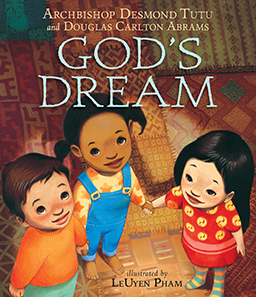 God’s Dream by Archbishop Desmond Tutu and Douglas Carlton Abrams is a beautiful explanation of the power of forgiveness and the value of unity amidst diversity. The book describes common scenarios that children experience to teach the art of compassion and models forgiving others when they hurt us. Additionally, the book teaches that though we may look and speak differently and worship in various ways, we are all part of the same family as God’s children.
God’s Dream by Archbishop Desmond Tutu and Douglas Carlton Abrams is a beautiful explanation of the power of forgiveness and the value of unity amidst diversity. The book describes common scenarios that children experience to teach the art of compassion and models forgiving others when they hurt us. Additionally, the book teaches that though we may look and speak differently and worship in various ways, we are all part of the same family as God’s children.
Illustrator LeUyen Pham uses vibrant colors and a range of perspectives to engage the reader and communicate the themes of the text. The illustrations are beautiful, unique, and memorable.
Children 2 years old and up will find this book fun to read and easy to track with. Older children can engage with the themes covered and will be able to reflect on their own experiences through reading it. They could have conversations not only about their own lives but the dynamics at play in the world could also be a conversation with older children also as a result of reading this together.
What Is God’s Name?
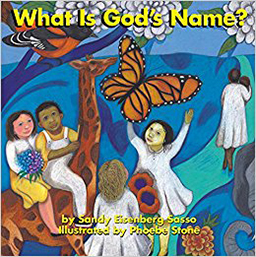 What Is God’s Name? by Rabbi Sandy Eisenberg Sasso is an adaptation for younger children of her other title, In the Name of God. This book is designed for children ages 2-4. It’s a great place to start with young children to help them think about the different ways we personify God and why.
What Is God’s Name? by Rabbi Sandy Eisenberg Sasso is an adaptation for younger children of her other title, In the Name of God. This book is designed for children ages 2-4. It’s a great place to start with young children to help them think about the different ways we personify God and why.
The book begins just after creation. Then, the author goes on to describe the search for God’s name. In doing so, she shows how our own unique experiences give rise to the way we imagine God. For example, the author writes, “The farmer called God Source of Life.”
Phoebe Stone, the book’s illustrator, uses bright color and dynamic form to give movement to figures. Although the figures’ faces and skin tones are at times a bit strange to my eye, the overall presentation is engaging and memorable.
God’s Paintbrush
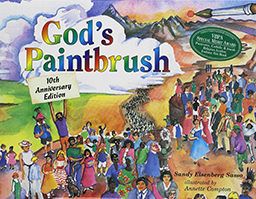 God’s Paintbrush, another title by Sandy Sasso, invites children of all faiths and backgrounds to encounter God openly through moments in their own lives by way of fantasy, involvement, and imagination. Also, this book helps the adults who love them to be a part of that encounter.
God’s Paintbrush, another title by Sandy Sasso, invites children of all faiths and backgrounds to encounter God openly through moments in their own lives by way of fantasy, involvement, and imagination. Also, this book helps the adults who love them to be a part of that encounter.
The pages provide a gift of images by Annette Compton that nurtures and encourages children in making meaning of their world. The images are created in such a way that children may identify with the style as one they might paint in.
It remains one of the most popular spiritual books for children of all faiths and all backgrounds, ages 4-8. The special anniversary edition that was released in 2004 includes new ideas for interaction between adults and children and an important message from the author.
What Is God?
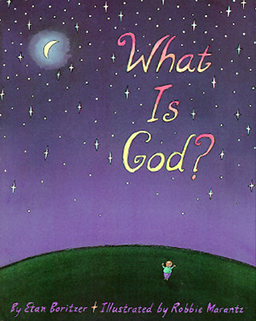 What Is God? by Etan Boritzer is an eloquent introduction to the ideas behind God and religion, and brings forward complex ideas in a way children will understand. It is written with simple clarity and beautifully illustrated with just the right blend of seriousness and humor.
What Is God? by Etan Boritzer is an eloquent introduction to the ideas behind God and religion, and brings forward complex ideas in a way children will understand. It is written with simple clarity and beautifully illustrated with just the right blend of seriousness and humor.
What is God? compares different religions – Christianity, Islam, Judaism, Hinduism, Buddhism – and their holy books, looks at misunderstandings and arguments among people of different religions, and talks about praying as well as feeling connected to everything in the world.
Robbie Marantz illustrates the book in a bright, expressive tone. He uses a style that is accessible to children and one they would find easy to engage with. Children ages 6-12 and those who nurture them will find lots to explore together.
When God Was a Little Girl
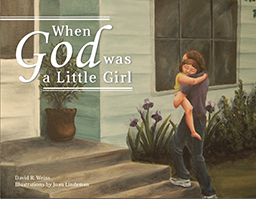 When God Was a Little Girl by David R. Weiss is a refreshing and innovative take on the creation of the universe. The narrative takes place within a conversation between daughter and father as they weave together the story of creation. The words on the page offer gentle wisdom and genuine insight.
When God Was a Little Girl by David R. Weiss is a refreshing and innovative take on the creation of the universe. The narrative takes place within a conversation between daughter and father as they weave together the story of creation. The words on the page offer gentle wisdom and genuine insight.
Illustrator Joan Hernandez Lindeman paints pictures for each of the creative acts that include young girls of diverse cultural backgrounds. She uses intense color for each illustration, each unique and expressive of divine joy and love.
Best for children ages 4-8, this book offers such beautifully imaginative ideas about the nature of God and creation.
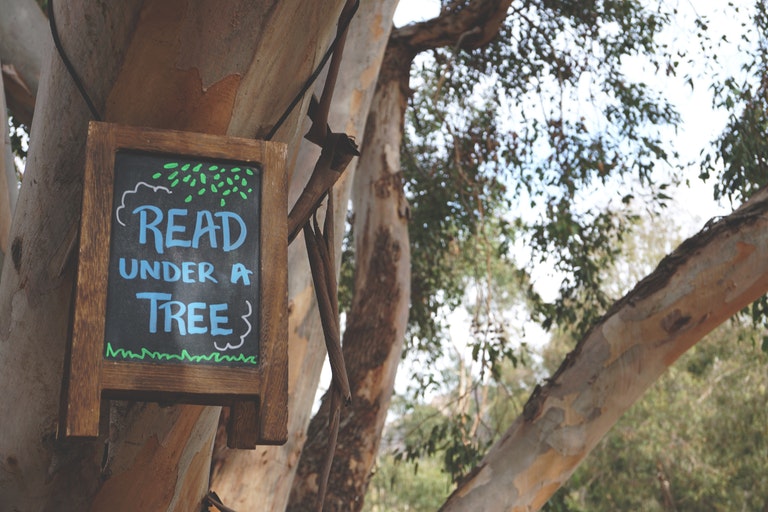
What are you reading?
Don’t forget to share in the comments below what interfaith children’s books you’re sharing with your kids. All of us would love to know, so we can add even more titles to our bookshelves!


Leave a Reply